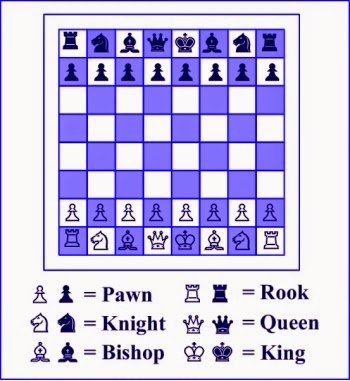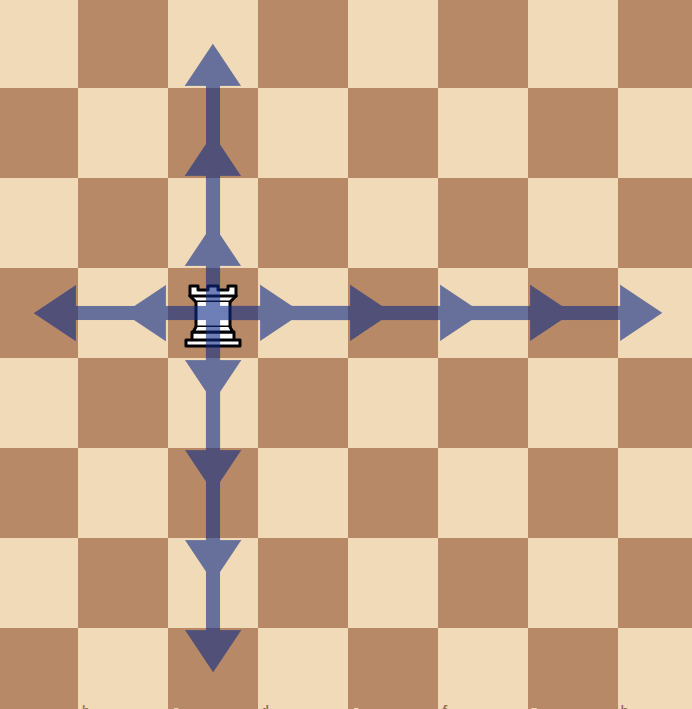

Each player begins with two bishops on opposite colors. The King cannot escape check because he is blocked in by his own pawns.īackward Pawn: A pawn that has no pawns of it's own color on adjacent files to protect it from attack.īad Bishop: A bishop that is blocked in by it's own pawns which rest on the bishop's own color.īishop: A minor piece (with the approximate value of 3 pawns) which moves on diagonals. Annotation is done after the game is played in either the written form or in person.Īttack: A move that threatens to capture a piece.īack Rank Checkmate: Checkmate that occurs when a player moves his queen or ook onto the opponent's first rank (8th rank for black, 1st rank for white) to deliver check. Please see our Guide to Notation for more information.Īnnotation: Commentary on a chess game that attempts to analyze the game by giving alternate moves. If the player does not announce "adjust", he/she will be bound to move that piece on his/her next turn.Īlgebraic Notation: A system of recording the moves of a chess game in which each square has a designated name. A player must announce "I adjust", "Adjust", or "J'adoube" (French for "I adjust") before touching his/her pieces.

Adjusting the pieces is generally done to move a piece to the center of the square. The player "on the move" seals his/her next move in an envelope only to be opened when the game resumes.Īdjust: To touch a piece or a pawn without the intention of making a move.

Pieces that are immobile or do not control any squares of consequence are considered "passive".Īdjournment: The postponement of an unfinished game. Also known as a Quick Chess TournamentĪctive: A term to describe pieces that are either on key squares or that control squares.

It is illegal to move the pinned piece in an absolute pin.Īction: A tournament with game times less than 30 minutes per side to complete each game. Keeping your queen close to your king helps him protect, but she can also defend from afar.Īs long as there is an open path to the king, the queen can act as a defender from across the chessboard.Chess Terms / Chess Dictionary / Chess SlangĪbsolute Pin: A piece that is immobilized because moving it would place the King in check. Avoid bringing your queen out into the open too quickly, since she may be threatened by the opponent’s pieces.Īlthough the queen is a strong attacking piece in chess, don’t overlook her ability to assist you protect your king. This component can be used for a variety of tactics and attacks. Any of the opponent’s pieces that are in her way can be captured by the Queen. She is unable to jump over other pieces, however. She has the ability to move in any direction and across any number of squares. It’s critical to both safeguard her and make appropriate use of her. She can become the most hazardous member of the game for your opponents because she has the widest reach of all the pieces. The queen sits next to the bishop on the centre square, which is the same colour as the piece (a black queen starts on the black square in the middle of all the other pieces, a white queen on a white square). Only one queen is available to each player, and she is worth nine pawns! The Queen, with her crown on her head, is the most significant and powerful piece in the game of chess (apart from the king!). Now your bishop cannot attack his pieces. Your opponent can take advantage of this by placing his pieces on squares of the opposite color. This is because the bishop only moves on the color of its starting square. When you have one bishop, you can only cover half of the squares. In tandem, the two bishops cover the black and white squares of the chessboard. They can capture any piece along the diagonals, and as they can reach so many squares (they can move from one end of the board right to the other in one move), they can prove very useful, especially when working in tandem. When there are no other pieces in their way, bishops can move in any direction diagonally, as many squares as desired. The one on the left is light-squared, while the one on the right is dark-squared. The bishop is the chess board’s ruler over the diagonals. They sit next to the knights and are worth three pawns each, just like the knights (some grandmasters would value them at about 3.3 pawns due to how powerful they can be in open positions).įortunately, the bishops, who were originally known as elephants, move far more easily than the knight. The two bishops are the game’s other small pieces.


 0 kommentar(er)
0 kommentar(er)
